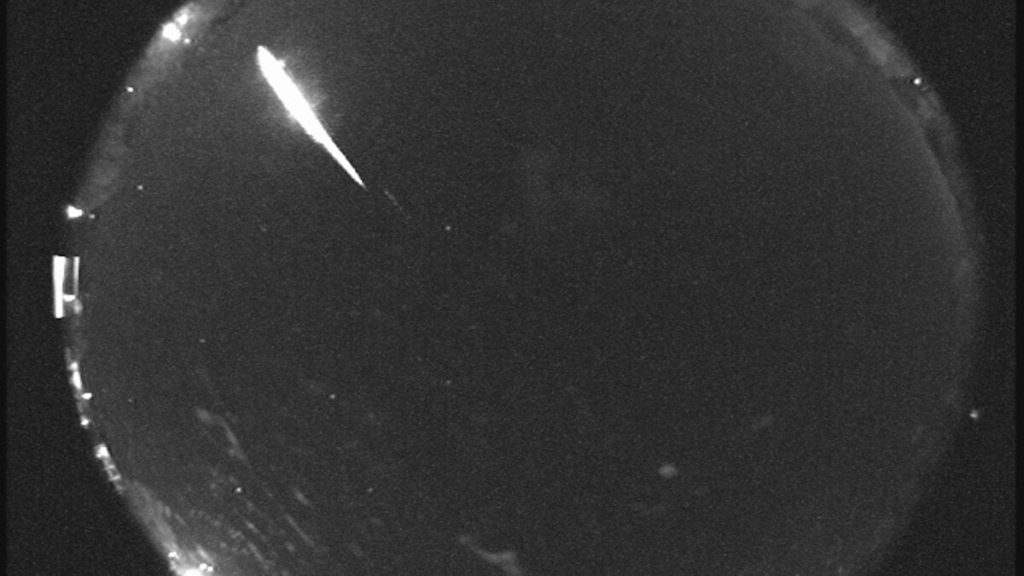Every fall, Earth passes through the stream of debris shed by Comet Encke, showering our planet with beautiful fireballs that streak across the night shy. And every few years or so, these Halloween fireballs can become particularly spooky, as Earth encounters denser, pebble-sized fragments of the comet, creating a brighter, more colorful meteor shower.
This annual sky-gazing spectacle, however, could in the coming years pose a danger to Earth if larger chunks of the comet were to impact our planet.
In a new study published in Acta Astronautica, scientists examine the potential risks of larger Taurids meteors raining down toward Earth in 2032 and 2036, suggesting that dense groups of Near-Earth Objects may hide a lurking danger.
Don’t look up?
The annual Taurid meteor shower peaks from late October to early November, appearing to radiate from the Taurus Constellation. Its parent comet, Encke, orbits the Sun approximately once every three years, and leaves behind a trail of dust and rock. Earth passes through Encke’s debris field twice a year—once in the fall during the night, and another time in June during the day when the meteor shower is invisible to the naked eye.
Every three to seven years, however, the Taurids get a little more intense, shedding denser clumps made up larger fragments. This leads to an uptick in the fireballs that can be seen from Earth. But what the researchers behind the new study wanted to figure out is whether a Taurid swarm might one day pose a potential hazard.
Using observational data and planetary defense modeling, the team of researchers found that the risk of air-burst sized Near-Earth Objects—small enough to explode in the atmosphere rather than hitting the surface but big enough to cause serious damage—is higher than previously estimated.
The team also warned of a possible Taurid resonant swarm, clusters of debris that are influenced by Jupiter’s gravity. The Taurid stream orbits the Sun seven times for every two orbits of Jupiter, which means that some of the rock and dust encounters the gas giant at regular intervals. Due to Jupiter’s massive size, the planet’s gravitational force can pull chunks of the debris together and create dense clusters.
“The resonant swarm is theoretical, but there is some evidence that a sparse swarm of small objects exists because bright fireballs and seismic signatures of impacts on the moon have been observed at times that the theory has predicted,” Mark Boslough, a researcher at the University of New Mexico, and lead author of the study, said in a statement.
If the hypothetical Taurid resonant swarm does occur, it will make a close flyby of Earth in 2032 and 2036. During those years, Earth could experience a higher impact risk from the Taurid meteor shower. Luckily, we have enough time to observe these dense clusters and come up with ways to mitigate the damage from a potential strike.
“We have the technology to test the Taurid resonant swarm by using existing telescopes for targeted sky surveys in 2032 and 2036 when the hypothetical swarm will make very close approaches,” Boslough said. “If we discover the objects with enough warning time, then we can take measures to reduce or eliminate the risk.”
“The average probability is extremely low, so even an enhanced risk means that the probability would still be low. The swarm will come from the direction of the sun in 2036, so fireballs will not be seen in our blue skies unless they are extremely bright,” Boslough added.


